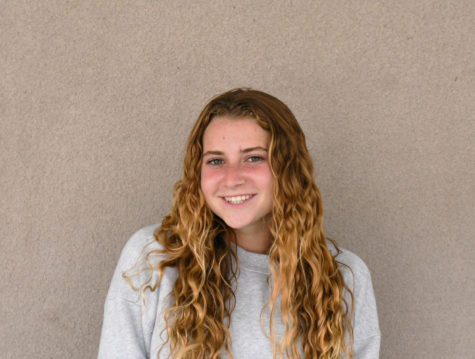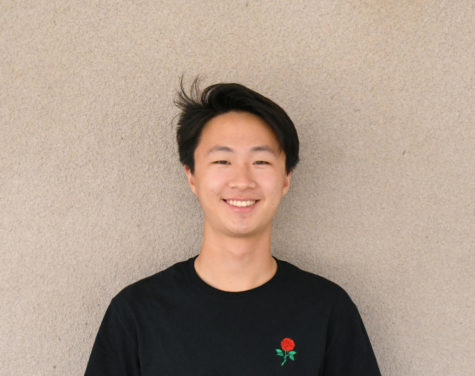PUSD approves plan to reopen to all students Jan. 19, bring staff back to campus Nov. 30
November 19, 2020
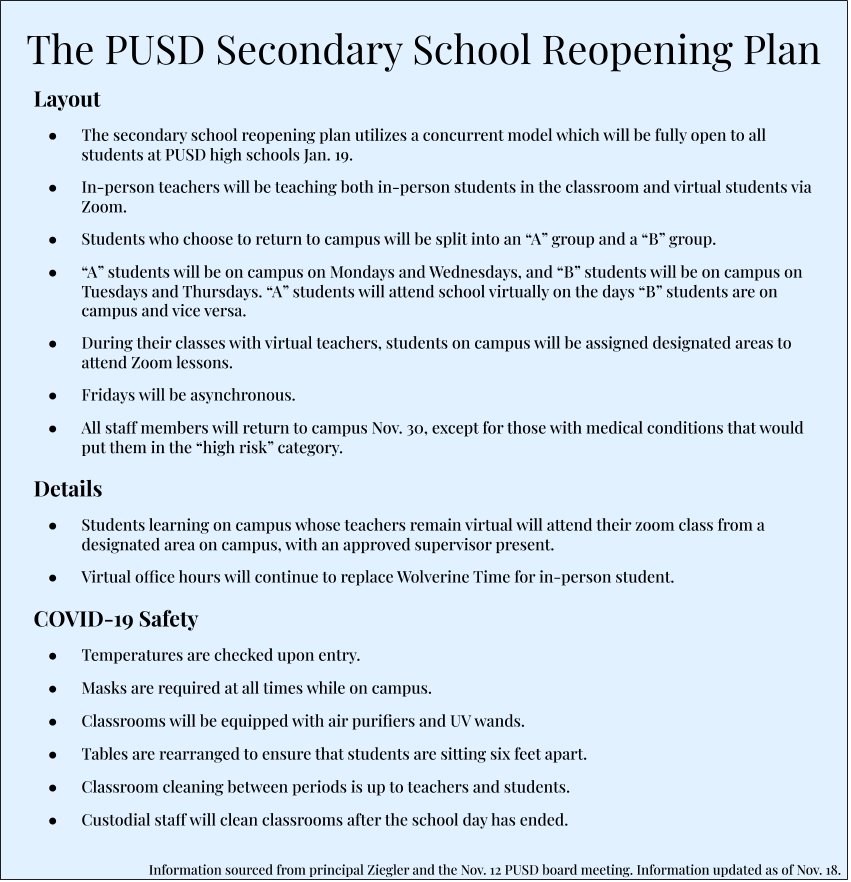
The secondary school reopening plan, which implemented the piloting of a concurrent model at middle and high schools across the district, was approved by the Poway Unified School District (PUSD) board Nov. 12. The board approved a decision to shift all full reopening dates to Jan. 19. The board also approved a decision to bring all teachers and staff back to work virtually from campus starting Nov. 30.
As of Nov. 18, San Diego had reached an 12.1 daily case rate out of every 100,000 residents, taking the county into the purple, or “widespread,” tier. According to the California Department of Public Health (CDPH) guidelines, schools that have already opened may stay open. As all PUSD schools have been reopened to some extent, the district announced Nov. 10 that they would continue with their plans to reopen.
Currently, all middle and high schools are piloting the concurrent model. Within this model, students have the option of attending school virtually or in person. To avoid issues with rescheduling, teachers who have chosen to return to campus will teach students through Zoom whether those students are on campus or not. On-campus students, during their classes with virtual teachers, will be assigned designated areas to attend Zoom lessons on campus. An approved supervisor will be physically present in those classrooms.
In order to follow state-mandated COVID-19 response guidelines of limiting the students in a classroom, according to Associate Superintendent of Learning Support Services Carol Osborne, in-person students at all PUSD high schools will be split into an “A” group or a “B” group. Each group will get two days a week on campus, either Monday and Wednesday or Tuesday and Thursday. Students will attend school virtually on the days that they are not on campus, and Fridays will be asynchronous for everyone.
To follow state-mandated guidelines, each classroom will have distanced tables, a UV wand for temperature checks, and an air purifier. Students and teachers will be responsible for sanitizing classrooms between periods if they should choose to do so. Custodial staff will clean classrooms after the school day has ended. Entry to the school as well as lunch periods may be staggered in an attempt to ensure social distancing, but a decision has not been made yet.
According to principal Tina Ziegler, if a student is checked to have a high temperature at the school entrance, they will be sent to the dance room next to the gym, and will return home when possible. If a student or staff member were to display COVID-19 symptoms, the person displaying symptoms would be required to self-isolate, and the school would follow the PUSD COVID-19 Symptom Decision Tree to ensure no further spread.
A few small groups have already begun to come back on campus, including some Westview Special Education classes, sports teams, clubs with important in-person aspects, and classrooms piloting the concurrent model. These small groups will continue to return to campus.
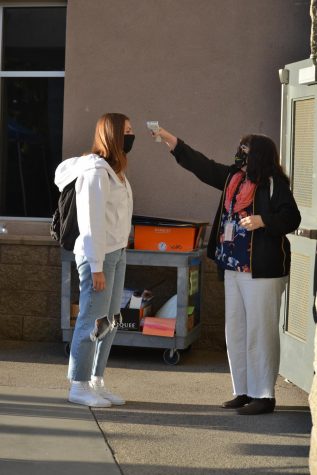
Social science teacher Dennis Sosnowski began piloting the model with his first- and second-period Civics classes Oct. 29. According to him, the transition to the concurrent model was initially nerve-wracking, but after a few lessons on campus, has proved a positive experience.
“I felt so comfortable because I was able to talk to them [the students],” Sosnowski said. “I could look them in the eye and get just even the smallest amount of affirmation that they were listening and that they understood.”
In the classroom, Sosnowski said that he felt like he was teaching two different classes—one in the classroom, and one on Zoom. He shifts back and forth between teaching in front of the room and returning to the desktop camera, choosing to focus on one group at a time rather than both simultaneously.
“If I’m just talking to students on Zoom or in the classroom, that’s okay,” he said. “I just need to make sure that both are getting equal instruction.”
Naomi Yoo (12), a student in Sosnowski’s second-period class, said she appreciated the experience of being back on campus.
“It was really refreshing because I’ve spent so much time just sitting in the same spot every single day in my room, staring at a computer screen for however many hours we do school,” Yoo said.
According to social science teacher Nicolas Spiess, however, the concurrent model is not without its shortcomings. Because of the two groups of students in two different settings, he said, there may be an issue with the equity of instruction.
“I don’t think it’s realistic for teachers to be able to split their attention into robust collaborative teaching for one group while still maintaining focus and competence for the group that’s online on Zoom,” Spiess said. “[For example,] if you’re testing online, you have the capacity to basically utilize the internet or your textbook because you’re on your own honor system, but in the classroom, you’re taking really a totally different test.”
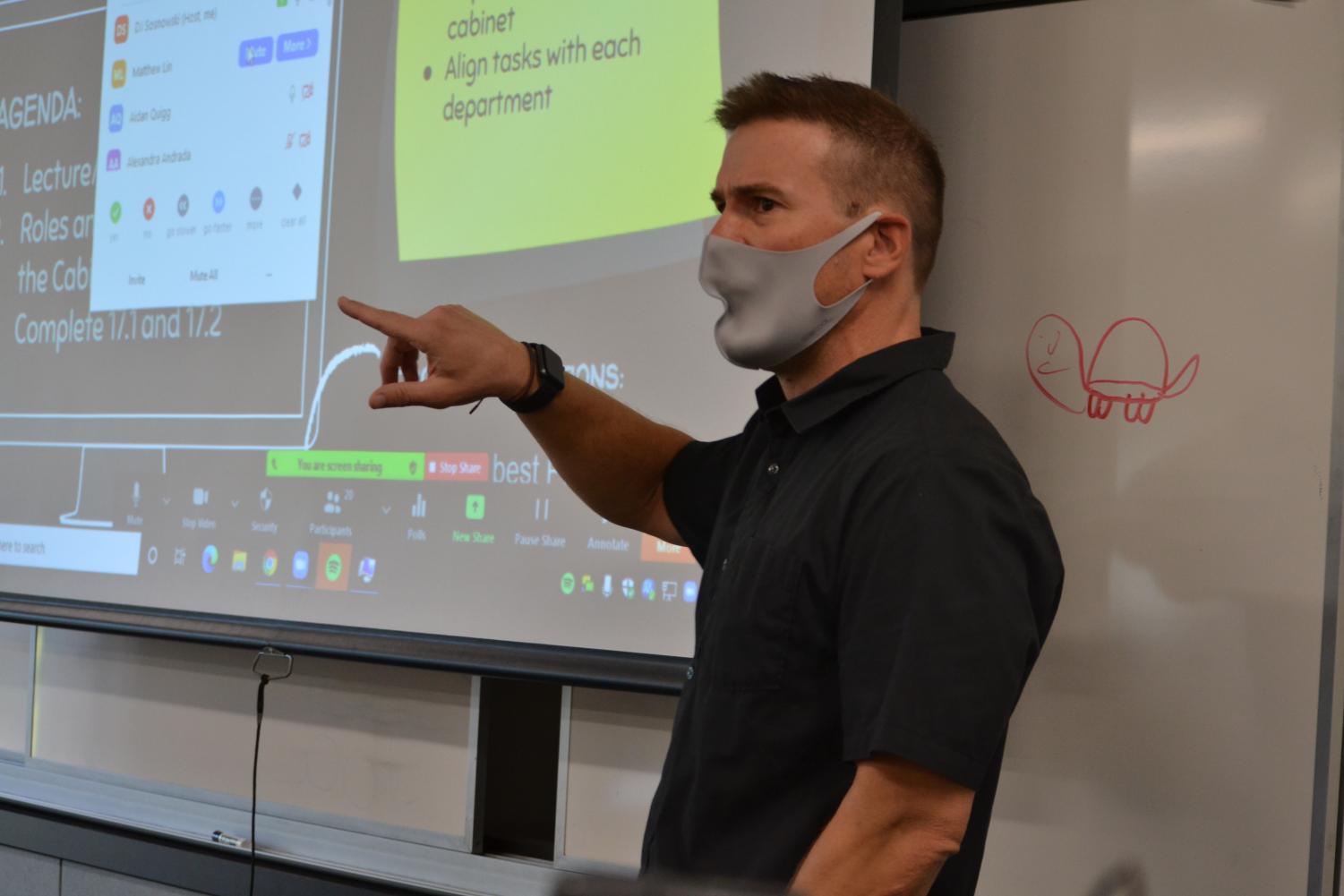
Along with concerns about the effectiveness of instruction, there is doubt among some staff and students regarding safety concerns and effectiveness of communication of the plan as a whole. According to a recent survey of certificated Westview staff by the Poway Federation of Teachers, 84% indicated that they were not comfortable returning to campus under present conditions.
According to Osborne, the decision to have teachers return to school on Nov. 30 is part of a transition to the concurrent model.
“Teachers will need to build their comfort level with [the concurrent model] in their classrooms,” Osborne said. “The earlier return for teachers will also help teachers familiarize themselves with the health and safety protocols that have been put in place for on campus learning.”
Osborne said that teachers may remain virtual if they have an approved medical condition that puts them at elevated risk.
Science teacher Bob Whitney said that the decision to bring teachers back Nov. 30 raises questions about physical safety at a time when COVID-19 cases in San Diego are continuing to rise. He said that the district should prioritize the physical safety of returning to campus and consult health experts, virologists and epidemiologists to help govern their decision, along with county trends and case numbers.
PUSD board president Michelle O’Connor-Ratcliff said at the board meeting Nov. 12 that students’ social-emotional health was a major driving force behind the decision to begin reopening.
“The more anecdotal evidence I hear, the more heartbreaking the wait becomes,” she said. “I can’t get past the knowledge that our students need this [reopening] sooner, need this now.”
Daniel Shaw (12) said he thinks that although it’s important to take students’ individual experiences into account, he also believes that the district should consider more quantitative measurements of students’ social-emotional health through mandated surveys like the commitment survey sent to families over the summer when making decisions on reopening.
Lili Olah (12) said that she would feel more comfortable with the district’s decision to reopen if communication to families was more clear and transparent.
“A lot of us students have been left in the dark and a lot of families have been left in the dark about how these decisions are being made,” Olah said. “Getting more information about what in-person learning would look like, or even how the decisions are being made would definitely help a lot of families feel more comfortable and secure.”
Spiess said that the decision to bring staff back on campus, along with the implementation of the concurrent model, was made without the teachers’ input. A committee of Westview teachers designed a model different from the concurrent one, but the board cited budgetary shortfalls as a reason to not use the committee’s model.
“I think the average student is not being served in this [concurrent] model,” Spiess said. “I think, by and large, teachers felt like the board was out of touch with what teachers and students want and feel.”
While the concurrent model is still being tested, Ziegler said that pilots of the model will help school administrators continue to revise and update a plan that allows students to return to campus safely and effectively.
“I think it’s going to be a good way for us to learn to make the different safety precautions that we’re going to make sure are in place,” Ziegler said.


